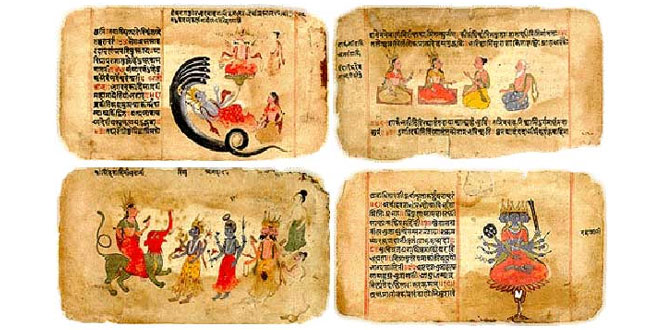Question: Write a short note on the Rigveda.
Answer: The Rigveda is the oldest of the Vedas. It indicates over a thousand hymns in Vedic (old) Sanskrit. These hymns (called ‘Sukta’ — well said) are in praise of various gods and goddesses, mainly: Agni, Indra and Soma. These hymns were composed by sages, who learnt them and made their children learn. Finally, they were printed about 200 years ago.
Question: Describe in brief about how the Rigveda depicts cattle, horses, chariots, and battles.
Answer: Rigveda has prayers for cattle and horses. Horses were used in battles. Battles were fought for cattle, land, people and water. Most men took part in wars. There was not any regular army. There were assemblies where people met and discussed matters of war and place. They chose brave warriors as their leaders.
Question: Write a short note on megaliths.
Answer: Megaliths are stone boulders used to mark burial sites. They were prevalent around 3000 years ago in the Deccan, South India, in the northeast and in Kashmir. Some megaliths are seen on surface and some are underground. Sometimes a circle of stone boulders or a single large stone is found standing on the ground, to indicate the position of burials.
Question: How do megaliths show that there were social differences?
Answer: Sometimes, more objects are in found in one grave than in another. This indicates that people were buried according to their social status. In Brahmagiri, a skeleton was found with 33 gold beads, 2 stone beads, 4 copper bangles, and a conch shell. Whereas other skeletons have only few pots.
Question: How have people in a society been depicted in the Rigveda?
Answer: According to the Rigveda, there are two groups of people in terms of their work:
- The priests, called Brahmins, and
- The ‘rajas’.
The priests performed various vituals while the ‘rajas’ ruled. These ‘rajas’ did not, however, have capital cities, palaces or armies, nor did they collect taxes. Two words were used to refer to the people or the community as a whole — those words were ‘jana’ and Vish’.
The people who composed the hymns referred to themselves using the word ‘Aryas’ and called their opponents ‘Dasas’ or ‘Dasyus’, The ‘dasas’ were later slaves and were treated as the property of their owners.
 Class Notes NCERT Solutions for CBSE Students
Class Notes NCERT Solutions for CBSE Students



Such a nice app.